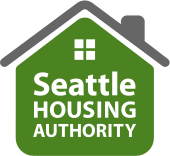CHICAGO—July 6, 2009—HUD Secretary Shaun Donovan used his address to the Learning Conference on State and Local Housing Policy to outline broad new approaches to federal housing policy under the Obama presidency.
He began by describing steps that HUD is already taking to help get communities back on their feet. "That work began with the Recovery Act, through which HUD is pumping some $14 billion into communities across the country," he noted. "And our work continues with the President's 'Making Home Affordable' plan," which assists homeowners in obtaining loan modifications.
Donovan also cited the Neighborhood Stabilization Program, which will "help communities purchase and convert foreclosed and abandoned properties into new affordable housing, land banks, or other options that preserve neighborhoods." A partnership with the Department of Energy will provide funding for weatherization of public housing units.
"All of these initiatives are predicated on restoring HUD's bedrock commitment to building and preserving affordable housing nationwide," he stressed. "Each of these efforts is based on our shared belief that if there isn't equal access to safe, affordable housing, there isn’t equal opportunity... The truth is, when you choose a home, you also choose the schools your child attends, you choose transportation to work. You choose a community.”
Donovan described the Sustainable Communities Initiative as an effort to combine these factors. This initiative encourages cities to develop integrated housing, land use and transportation plans.
"Today, families spend nearly 60 percent of their budgets on housing and transportation costs. That's not only unacceptable—during an economic downturn, it's unsustainable. And so, the goal of this initiative is to articulate a vision for growth tailored to specific metropolitan markets that federal housing, transportation, and other federal investments can support."
Donovan also described the Choice Neighborhoods Initiative. This program, which has some similarities to the HOPE VI program used to create new mixed-income communities such as High Point in Seattle, would broaden the scope of redevelopment to include schools, child care, health care, public transportation and retail businesses.
"At the core of all of these ideas is the same concept: Planning communities in a more integrated, sustainable and inclusive way isn't separate from advancing economic opportunity for the families we're trying to reach—it's absolutely essential," Donovan noted.
In addition to outlining these new initiatives, Donovan stressed the need for transformation at HUD itself. "Too often, HUD hasn’t been a catalyst for change but a barrier to it."
Read the complete text of Shaun Donovan's address (PDF, 60 KB, download Adobe Reader).
Bruce Katz followed Donovan with an address entitled "A New Generation of Federal Housing Policy." Katz is a Vice President at the Brookings Institution and founding Director of the Brookings Metropolitan Policy Program.
Katz provided details on Donovan's vision, outlining five central elements of emerging national policy:
- The restoration of sanity, transparency, and fundamentals to mortgage finance and the process of home buying and homeownership.
- A return to balance in housing policy, with attention and leadership and resources dedicated to making rental housing affordable in safe, quality communities.
- The use of housing policy to advance communities of choice, where families can live close to decent schools, quality retail and decent amenities.
- The positioning of housing as a vehicle for energy efficiency at the building scale and sustainable, transit-friendly growth at the metropolitan scale.
- The renewal and transformation of HUD itself, to both lead and support the national response.
His address outlined specifics of how the proposed HUD budget represents "a return to federal leadership on rental housing. The budget will, for the first time, capitalize an Affordable Housing Trust with $1 billion. The Affordable Housing Trust Fund represents the first major federal housing production program since the creation of the HOME program in 1990."
Katz also spoke to the need for transformation and reform at HUD—"In television terms, an extreme makeover." He asserted that, "Externally, the agency acts as either an enforcer or a passive investor rather than an active partner."
In his address, Katz also outlined the housing policy issues that need to be addressed in the coming years. These include re-making Fannie Mae and Freddie Mac and opening a conversation on tax policy related to housing. He noted that tax benefits to homeowners—including the mortgage interest deduction—were $141.7 billion in 2008, as compared with benefits to renters of $4.4 billion in Low Income Housing Tax Credits and $45.4 billion in HUD direct expenses.
He also called for examining the sustainability of HUD's budget, 75 percent of which is dedicated to renewing Section 8 rental subsidies and maintaining public housing. "In many respects, HUD has become a Department of Renewals and Maintenance and has ceased to be an effective player in addressing the rising challenge of housing unaffordability and newer energy and environmental imperatives. Something has to give."
Read the complete text of Bruce Katz' address (PDF, 76 KB).
